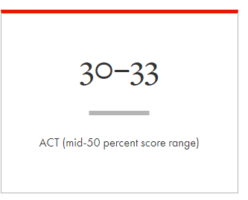Test Optional or Not? A Q and A with CIT College Testing Policies Whiz Tiffany Kolb: What You Need To Know Right Now About College Applications and Test Optional Policies

Should your senior apply to a particular college ticking the Test Optional box? In this interview, CIT Consultant and testing policies whiz Tiffany Kolb addresses college testing policies and family choices around test optional admissions — including possible impacts on Early Action or Early Decision applications and merit aid
Q: Under what conditions should a student consider applying Test Optional?
There are a couple of general guiding principles for considering Test Optional, in general. First, if the student’s test score is not parallel to his or her high school grades and coursework, you might consider applying Test Optional.
Second, if a student’s test score is below the middle 50% of test scores for the school to which the student is applying, then look at the school’s test policy.
Third, be aware that generally speaking, when test scores are not used, other application materials are scrutinized more carefully and sometimes additional essays or supporting information is requested.
more carefully and sometimes additional essays or supporting information is requested.
Finally, become and stay informed; continue to monitor the situation because the situation is changing, on the testing front and from the college perspective. Many colleges and universities have a link to their Test Optional policy right on the application. Families should read it in detail before deciding whether or not to submit test scores.
Q: You mentioned the importance of the “middle 50%” determination as a criterion of a test optional application. Could you elaborate on that? And, how can a student find clear data?
The middle 50% is the average test score from last year’s admitted class. The data give a student a sense of how s/he fits into that demographic. If the score is below the bottom number, then that is one strong indicator that the student should consider applying test optional to that school, though this consideration must be done with a view toward the strengths and weakness of other application factors such as GPA and the student’s extracurricular record.
Admitted student data can often found on a school’s website, under the admissions tab. Too, students can contact Admissions and also discuss the policy during that conversation.
When I do this search for Grinnell College, I find the following table. Using my advice as a benchmark, a student with a 25 ACT score might consider applying test optional, because s/he is in the bottom quartile.

Q: What conundrums are students currently facing in terms of Test Optional policies?
The most difficult thing for students and families right now is that there are aspects of the testing situation that are out of their control, like access to testing. There are some high school seniors who have had ACT or SAT tests cancelled two, three or even four times. They may have no option but to consider applying Test Optional.
 This situation is further complicated by the fact that future testing dates are speculative only. Will the tests take place? Will students be allowed into the testing sites, if indeed they are open at all? None of us know.
This situation is further complicated by the fact that future testing dates are speculative only. Will the tests take place? Will students be allowed into the testing sites, if indeed they are open at all? None of us know.
The second most difficult aspect is that this is very new ground for many colleges and the terrain is constantly changing and therefore difficult to negotiate. College admissions committees have never had an application season like this, and they are figuring it out, creating ad hoc policies and doing their best to be fair to students while maintaining standards. The truth is, they simply don’t know what their field of applicants will look like.
Q: What is the best practice/s for students still taking tests, when it comes to ED and EA decisions?
Best practice is that if you are scheduled for an ACT or SAT, then you should know the specific information for each school on your list regarding supporting materials. If you are trying to meet Early Action or Early Decision deadlines and are scheduled to test in December, then be aware that some schools with strict application materials guidelines will bump you into Regular Decision. In the past, at least, many admissions offices have been inflexible.
Whether the future resembles the past in this regard is anyone’s guess. If a later decision – bumped from EA to Regular Decision is the example I am using – is enough to make you consider applying Test Optional, then you need  to know the information regarding each school’s policy on that.
to know the information regarding each school’s policy on that.
You really have to check and double check the information. Students and parents have to be aware if there is an option to not submit test scores, but also what this means not only for acceptance, but also for the possibility of impact on merit aid.
Q: What should families/students be doing right now in terms of figuring this out — generally, and in terms of specific schools on the college list?
Families can make a list of all the schools the student is applying to, then research the application deadlines, including the deadlines for supporting materials like test scores. Be meticulous about researching Test Optional policies, even calling your admissions representative. Ask whether or not test scores are required to be considered for merit scholarships if you cannot find this information on the application or school website.
Q: Calling admissions officers might be a new idea, to some families.
Admissions officers are eager to touch base with families right now. Finding your contact, and reaching them with an initial question is a great way to get your question answered, and also just a great way to start your relationship if you haven’t already. Folks in Admissions Offices are generally warm, generous people who eager to talk to students and families. Starting that communication is a way to reduce uneasiness on both sides.

CIT Consultant Tiffany Kolb worked in private and public schools before turning full time to college admissions work several years ago. An intrepid traveler and lover of college tours, Tiffany’s most recent visits to some of the great private colleges of the Northeast and East Coast are posted on our CIT Facebook page – published right before COVID shut down campuses.
